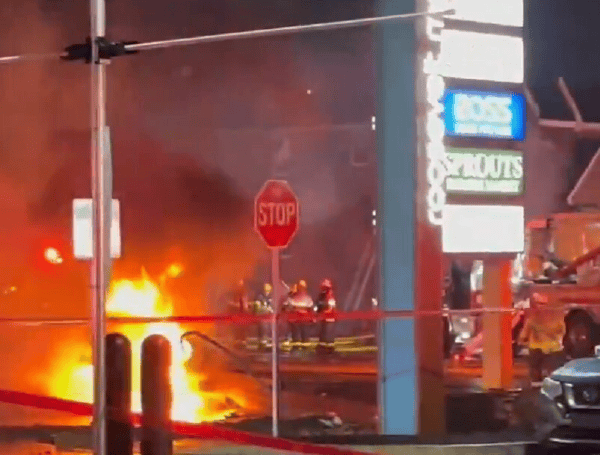A small plane crash in Philadelphia, Pennsylvania, on Friday night, occurred during adverse weather conditions, according to AccuWeather expert meteorologists. The incident comes just days after the deadly mid-air collision near Washington, D.C., though experts note that weather conditions in the two tragedies were markedly different.
AccuWeather Chief Meteorologist Jon Porter reported that light rain, fog, and low cloud cover were present in northeast Philadelphia at the time of the crash. Visibility at the surface was between 5 to 7 miles, with the base layer of clouds hovering 400 to 600 feet above the ground. Winds from the southwest were recorded at 10 mph.
READ: VIDEO: Plane Crash In Philadelphia: Mayor Urges Public To Stay Clear Of Active Scene
“Unlike the midair collision in Washington, D.C., where adverse weather conditions were not present, inclement weather will likely be a key factor in the investigation into this small plane crash in Philadelphia,” Porter said.
First responders and investigators at the crash site faced challenging conditions as rain and fog persisted through early Saturday morning. Fog was expected to clear after 3 a.m. E.S.T., with northwest winds increasing to 15-25 mph and gusts reaching 30 mph later in the day. Rain is not expected to return to the area for the rest of the weekend, providing clearer conditions for recovery and investigation efforts.
The cause of the crash remains under investigation, with weather conditions being a critical factor for review. “It may take investigators months to a year or longer to determine if the rain or fog had a role contributing to this tragic plane crash in Philadelphia,” Porter explained.
READ: Defense Secretary Pete Hegseth Addresses D.C. Plane Collision, DEI, And GITMO Migrant Housing
The crash site, which was engulfed in flames shortly after the incident, has been the focus of intense recovery efforts. First responders worked through the night to secure the area and recover victims, though details about the number of passengers or crew on board have not yet been released.
The Philadelphia crash is the second major aviation incident in the Northeast this week, following the mid-air collision near Washington, D.C., on Wednesday night. That collision, which involved a military Blackhawk helicopter and a commercial passenger jet, resulted in the deaths of all 64 passengers and crew on the commercial flight, as well as the three military personnel aboard the helicopter.
While the D.C. collision is believed to have been caused by staffing shortages and operational errors in air traffic control, the Philadelphia crash appears to be linked to adverse weather conditions. The contrasting factors highlight the diverse challenges faced by the aviation industry, from human error to environmental hazards.
READ: Trump Clashes With Press Over DEI And DC Plane Crash Investigation “I Have Common Sense”
Recovery efforts in both Philadelphia and Washington, D.C., are ongoing, with officials emphasizing the need for thorough investigations to prevent future tragedies.
In Philadelphia, the focus remains on determining the role of weather in the crash, while in D.C., the investigation is centered on staffing and procedural failures.
Please make a small donation to the Tampa Free Press to help sustain independent journalism. Your contribution enables us to continue delivering high-quality, local, and national news coverage.
Connect with us: Follow the Tampa Free Press on Facebook and Twitter for breaking news and updates.
Sign up: Subscribe to our free newsletter for a curated selection of top stories delivered straight to your inbox.


